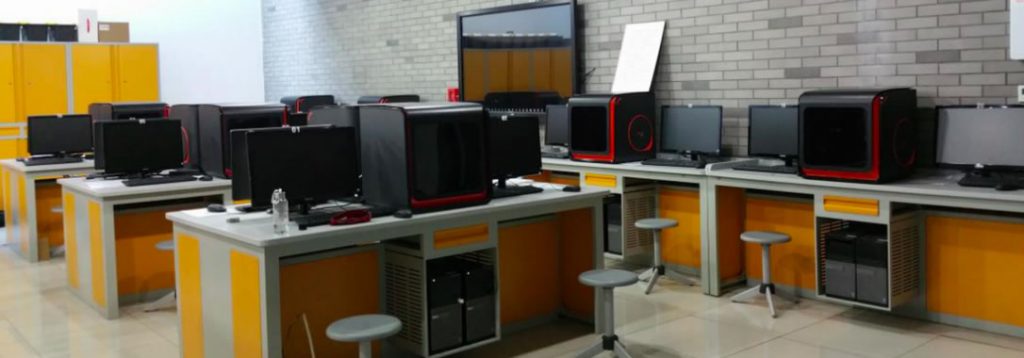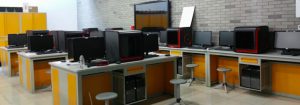Established in the Yongzheng period of the Qing Dynasty, Beijing No. 2 – both a high school and middle school – is a national model education facility with a 292-year history. Adhering to the motto, “Comprehensive Superior Quality and Pursuit of Excellence,” is not easy, but it is expected.
Per the new curriculum reform requirements of the Beijing Municipal Commission of Education, the school boldly develops courses conforming to modern education standards and affords resources for the development of new curricula designed to cultivate its students’ ability to innovate. Beijing No. 2 has successively constructed more than 20 classrooms and labs for CAD design and manufacturing, artificial intelligence, robotics, networking technology and other subjects commonly known as STEM.
As early as 2012, the school started planning and development for the Future Engineer program. After three years of research and preparation, the work came to fruition. CAD Design and Manufacture (Including 3D Printing) became an aspect of general technology studies for high school sophomores. The school also offered 3D Creative Design as an elective course and an association involving 3D printing content for all students to enhance learning and experience in this field.
As part of its effort to support ambitious future engineers, Beijing No. 2 bought ten sets of UP BOX 3D printers during course curriculum construction.
CAD Design and Manufacture is a full-year course – one class (40 minutes) per week and 20 credit hours per semester. The school adopted smaller class sizes to optimize the operating time and security of every student. Each class was divided into two groups, respectively taught by two teachers, and the number of students for each class was limited to about 15. By the end of their first semester, students have designed and printed their work.
Teachers with real-world professional experience teach general technology courses at Beijing No. 2. When talking about the benefits CAD Design and Manufacture may bring to the students, Teacher Zhang Jinliang, an expert in CAD and manufacturing and one of the founders of the Future Engineer course, said, “High school students have lots of creative ideas. Traditionally, many design thoughts cannot be reflected and presented. 3D printing can completely realize a student’s design thoughts with rapid prototyping instead of the idea being relegated to their head or paper.”
Zhang has a keen understanding of the course’s significance. “It doesn’t matter if the work is beautiful or not. The pleasure brought to the students cannot be underestimated as long as the work is their design and print. Teaching them to turn their imagination into reality is the important part.”
After using UP BOX 3D printers in a classroom setting the past half a year, Zhang praised the accuracy, stability, easy operation and other advantages of Tiertime 3D printers. “When teachers and students print multi-component models, the printed parts can be directly assembled without any post-processing as long as their sizes and tolerances are well set. This is a great convenience compared to most other desktop 3D printers. UP has outstanding advantages in this regard.”
Beijing No. 2 regularly participates in science & technology and maker activities organized by the state, Beijing City and Dongcheng District each year. No. 2’s “F1 in School” team uses the UP BOX printers to produce the forward wings, spoilers, and wheels for their race cars. The robots and robot arms for other competitions are also created with 3D printing. “When designing robots, the possibility for innovation is increased,” said Zhang.
More and more students are joining the ambitious plan to cultivate future Engineers. The transformation from “Made in China” to “Designed in China” is just around the corner.



